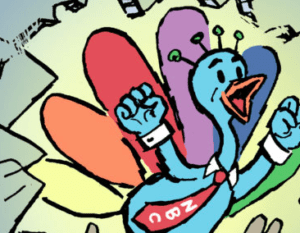With the rise of signal loss, Qloo expects more advertisers to develop a taste for its AI-powered recommendation API.
On Wednesday, Qloo (pronounced “Clue”) announced that it has raised a $25 million series C funding round led by AI Ventures, with participation from AXA Venture Partners, Eldridge and Moderne Ventures.
The round brings Qloo’s total funding to more than $56 million since the company was founded in 2012.
Qloo’s AI models and databases rely on trillions of data points from more than 575 million “cultural entities,” which is the term it uses for “categories,” like music, film, TV, brands, dining, hotels and sports.
Because it doesn’t tap into identity data and recommends audience segments based on generalized knowledge, Qloo has seen increased demand for its API as more data privacy regulations come online, said CEO and Founder Alex Elias.
Now, third-party cookie deprecation and “the AI wave” are prompting another bump in business, he said.
Get a Qloo
Qloo, whose clients include Netflix, the Michelin Guide, Samsung, Universal Music Group, PepsiCo and OOH advertising company JCDecaux, has devised models that conceptually link people’s cultural tastes.
Taste, in Qloo’s view, is the common denominator of interconnected customer preferences and behaviors.
Using the company’s API, advertising platforms can create audience segments and deliver personalized ads to users based on taste.
For instance, a film studio layered Qloo into all of its media buys, including on social networks, via a DMP integration and realized that a certain film would appeal to fans of electronic music and anime. It was then able to target those audience tastes as part of its media buys, Elias said.
The studio saw a “double-digit percentage increase” in movie trailer view-through rates, he said, as well as lower media costs.
Advertisers also can make inferences about, say, the most likely fashion brand preferences for a particular geographic location, even mapping out consumer tastes block by block. Or they can ask which Walmarts nationwide are most correlated to Mexican soda brand Jarritos versus sparkling water brand LaCroix, which can inform their physical distribution and media buying decisions.
Clients can also fine-tune the model based on different parameters. Some brands might want more “discovery,” “novel association” and “serendipity” in the results, Elias said, while others might want more “safe and popular” results.
What’s inside
To arrive at these insights for advertisers, Qloo relies on machine learning algorithms that employ deep learning methods, Bayesian statistics, neural networks and natural language processing.
Qloo’s knowledge graph breaks down relationships so buyers can visualize trends, like how cuisine subgenres such as Thai, French and Oaxacan intersect. Advertisers can also track trends and correlations over time.
The company’s data comes from a wide variety of sources, both licensed and open source, including proprietary training data from its APIs. The value of the open-source community, Elias said, is that it can introduce Qloo to niche new trends, such as artists that might not have wide distribution but are still regionally significant.
One source of proprietary data comes from TasteDive, a recommendation engine Qloo acquired in 2019. After the acquisition, Qloo removed all ads from the platform so users could interact without having an account, Elias said.
But Qloo doesn’t collect or use any personally identifiable information, Elias said. Advertisers make “ad hoc requests,” like “show me restaurants and hotels in London and New York for people who like John Coltrane,” and Qloo returns “informed guesses” about likely targets.
Clients can use commercially available large language models (LLMs) from the likes of Google and OpenAI in concert with Qloo’s models, but Qloo isn’t built on top of them. “We see [LLMs] as a new interface over data,” Elias said. “You still need quality data underlying that.”
Fresh funds
Looking ahead, the company’s latest financing will go toward hiring, building a self-serve tool for SMBs and solo developers, doing more “strategic M&A” like its acquisition of TasteDive and supporting academic uses of its product, Elias said.
Acquisition-wise, Qloo is looking for a company that has “burrowed into a very specific subset of knowledge” within a larger genre, like music, Elias said.
As for its team, Qloo currently has “north of 50” employees, mostly engineers, Elias said. The company aims to increase that number to more than 100 by the end of the year, including hiring writers, growth coordinators, developers and salespeople.
“Even within the world of ad targeting,” Elias said, “we want to empower brands to appreciate the rich tapestry of tastes that exists out there.”














